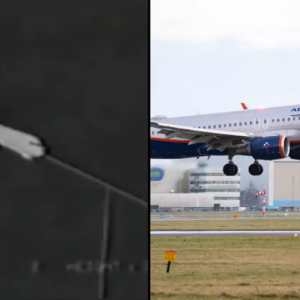Böhmerland, known locally as Čechie, was a prominent motorcycle manufacturer in Czechoslovakia from 1924 until the outbreak of World War II. The brand was renowned for its unique motorcycles, primarily designed by Albin Liebisch.
Key features of these motorcycles included an exceptionally long, all-welded tube-frame chassis, advanced leading-link front forks, and solid cast aluminum wheels – a pioneering feature in the industry not commonly seen until the 1970s.

The motorcycles were powered by overhead valve single-cylinder engines, typically 600 cc (37 cu in) with a bore and stroke measuring 78 mm × 120 mm (3.1 in × 4.7 in). The Böhmerland was offered in various wheelbases, catering to different needs: the two-seat Sport, the three-seat Touren, and the four-seat Langtouren.
The Böhmerland Motorcycle, was produced in Czechoslovakia from 1924 until the onset of World War II, the Böhmerland Motorcycle’s story is not just about a machine but also about the vision of its creator and the era it was born into.
Origins and Vision
This journey begins with Albin Liebisch, an engineer whose foresight and creativity were the driving forces behind the motorcycle’s conception. Liebisch’s vision was not just to create another motorcycle but to challenge the existing norms and introduce a machine that was distinct in both functionality and design.
 The 1920s and 1930s were marked by a growing interest in personal transportation
The 1920s and 1930s were marked by a growing interest in personal transportation
Albin Liebisch, the architect of the Böhmerland Motorcycle, was a man ahead of his time. His background in engineering and passion for motorcycles led him to envision a type of motorcycle that diverged significantly from the typical models of the 1920s.
Liebisch saw potential for a motorcycle that could offer more in terms of durability, stability, and practicality, especially considering the diverse and often challenging terrains of Central Europe.
He envisaged a vehicle that was not only a means of transportation but also a symbol of technological advancement and design excellence.
The era in which the Böhmerland was conceived was crucial to its development. The interwar period was a time of significant change and innovation in transportation. The end of World War I had left Europe in a state of flux, with technological advancements emerging at a rapid pace.
In this environment, Liebisch saw an opportunity to introduce a motorcycle that could meet the demands of the changing times. He aimed to create a motorcycle that was robust enough for the rural roads, yet sophisticated enough to symbolize the technological progress of the era.

Liebisch’s vision was also influenced by the social and economic conditions of the time. The 1920s and 1930s were marked by a growing interest in personal transportation, with more people seeking affordable and reliable means to travel.
Travel and Exploration
However, Liebisch noticed a gap in the market for a motorcycle that could cater to more than just the basic needs of commuting. He aimed to design a motorcycle that could serve not just as a personal transport vehicle but also as a companion for longer journeys and adventures, reflecting the growing enthusiasm for travel and exploration during the period.
In creating the Böhmerland, Liebisch sought to incorporate features that were unconventional yet highly practical. His approach to the motorcycle’s design was holistic; he considered not just the mechanical aspects but also the comfort, safety, and aesthetic appeal.
The result was a motorcycle that was not only mechanically advanced but also visually striking and comfortable to ride, even on longer journeys.
The history of the Böhmerland Motorcycle during World War II is notably marked by the impact of the conflict on its production and the broader motorcycle industry in Europe. With the onset of the war, the circumstances surrounding the manufacture and use of motorcycles, including those like the Böhmerland, underwent significant changes.
Cessation of Production
The production of the Böhmerland Motorcycle faced a critical juncture with the advent of World War II. The motorcycle, known for its unique design and bespoke manufacturing, was produced in Czechoslovakia, a region significantly affected by the war.
The onset of the conflict in 1939 led to a shift in industrial priorities across Europe, with resources being redirected towards the war effort. This reallocation had a profound impact on civilian manufacturing, including that of motorcycles.
For the Böhmerland, specifically, the war meant a halt in production. The resources and materials required to continue building these unique motorcycles became scarce, as they were more urgently needed for military purposes. Additionally, the economic strain and the shifting focus of the workforce towards supporting the war effort further hindered the possibility of continuing production.
Use During the War
While there is limited information on the specific use of Böhmerland Motorcycles during World War II, it is known that motorcycles, in general, were requisitioned and utilized extensively by various militaries during the conflict.
Motorcycles served as a vital means of communication, reconnaissance, and swift mobility on the battlefield. However, the unique characteristics of the Böhmerland – particularly its length and design for civilian comfort – may have limited its suitability for military use in a standard capacity.
When the German army came across a Böhmerland motorcycle they pressed them into service, until they broke down and were then abandoned.
Design and Features of the Böhmerland
it becomes evident that this machine was not just a transport vehicle but a pioneering work of engineering. Its design was a harmonious blend of functionality, durability, and a daring deviation from the conventional motorcycle designs of its era.
At the heart of the Böhmerland’s design was its unprecedented length. The motorcycle’s elongated chassis, the longest of any production motorcycle of its time, was a bold statement. This length wasn’t just for aesthetic appeal; it served practical purposes.

The extended wheelbase provided stability and comfort, a crucial factor considering the rough road conditions of the 1920s and 1930s. This feature allowed the Böhmerland to accommodate more than the standard two riders, with some models having seating for three, and even up to four people, a feature that was unheard of in motorcycles of that period.
The all-welded tube-frame chassis was another revolutionary aspect. While most motorcycles of the time used bolted frames, Liebisch’s choice of welding the frame provided enhanced rigidity and durability.
This design meant the Böhmerland could withstand the stresses of long-distance travel and rough terrain better than its contemporaries. This durability was further enhanced by its unique suspension system, which provided a smoother ride, again emphasizing the motorcycle’s suitability for long journeys.
Robust Single-Cylinder
The wheels of the Böhmerland were another remarkable innovation. Liebisch’s decision to use solid cast aluminum wheels was groundbreaking. At a time when spoked wheels were the norm, the use of aluminum wheels was not only innovative but also practical.
These wheels were less prone to damage and required less maintenance, an essential consideration for riders at the time. This feature, though not widely adopted until the 1970s, showcased Liebisch’s forward-thinking approach to motorcycle design.
Under the hood, the Böhmerland was powered by a robust single-cylinder, four-stroke engine. This engine was designed with a focus on reliability and ease of maintenance, recognizing the needs of riders who might not have easy access to professional service. The engine’s design ensured a balance between power and efficiency, making the Böhmerland suitable for both short trips and longer journeys.
 Made in Czechoslovakia from 1925 to 1939
Made in Czechoslovakia from 1925 to 1939
In terms of aesthetics, the Böhmerland stood out with its distinctive styling. The motorcycle’s design was a blend of functionality and art. Its long frame was complemented by a simple yet elegant bodywork, which was available in a variety of bright colors, unusual for the time. This stylistic choice added to the motorcycle’s appeal, making it not just a vehicle but a statement piece.
Production and Challenges of the Böhmerland
The production process of the Böhmerland was as unique as the motorcycle itself, reflecting a commitment to quality and individuality in an era where mass production was becoming the norm.
The manufacturing of the Böhmerland Motorcycles commenced in 1924 in Czechoslovakia, a period marked by a burgeoning interest in motor vehicles. Each motorcycle was hand-built, a process that underscored the artisanal skill and attention to detail synonymous with the Böhmerland brand.
However, the very factors that made the Böhmerland unique also presented significant challenges. The meticulous, handcrafted nature of its production meant that the motorcycles were not only expensive to produce but also carried a high price tag.
 A short-wheelbase two-seat Böhmerland with a conventional fuel tank
A short-wheelbase two-seat Böhmerland with a conventional fuel tank
In the context of the interwar period, particularly during the Great Depression, this made the Böhmerland a luxury item, accessible only to a limited clientele. The economic hardship of the era severely restricted the market for such premium products, limiting the motorcycle’s widespread adoption.
Another challenge was the Böhmerland’s unconventional design. Its extraordinary length and size, while innovative and beneficial in certain aspects, rendered it less practical for the average rider, especially in urban settings where maneuverability and space were key considerations.
This factor made the motorcycle more of a niche product, appealing to a specific segment of motorcycle enthusiasts but not to the broader market.
Moreover, the motorcycle industry in the 1920s and 1930s was undergoing significant changes, with a shift towards more streamlined, mass-produced models. The Böhmerland, with its unique, hand-built approach, stood in stark contrast to this trend. While this distinction set it apart, it also meant that the Böhmerland struggled to compete against more commercially viable models produced by larger manufacturers.
The onset of World War II further complicated matters. The war brought about drastic changes in the economic and industrial landscape across Europe. Resources became scarce, and the focus shifted towards wartime production. For a small, bespoke manufacturer like the Böhmerland, these conditions were particularly challenging, eventually contributing to the cessation of its production.
Böhmerland Cultural Impact and Legacy
Despite these challenges, the Böhmerland Motorcycle made a significant cultural impact. It was a symbol of innovation and Czechoslovak engineering prowess. The motorcycle appealed to a niche market of enthusiasts who appreciated its uniqueness, durability, and the statement it made.
The legacy of the Böhmerland extends beyond its production years. It is remembered as one of the most unusual motorcycles ever made. Its emphasis on long-term durability and its unique design choices were far ahead of their time. Today, the Böhmerland is a coveted collector’s item, celebrated for its uniqueness and the visionary spirit of its creator.
News
The “Red Zone” – Land Still Abandoned Due to the Dangers Left by the First World War
The “Red Zone” – Land Still Abandoned Due to the Dangers Left by the First World War In the aftermath of the First World War, large areas of northeast France were left in ruin. Years of constant siege warfare along…
Before Becoming a Big-Name Actor, Richard Todd was a Paratrooper Who Fought at Pegasus Bridge
Before Becoming a Big-Name Actor, Richard Todd was a Paratrooper Who Fought at Pegasus Bridge Photo Credit: 1. Sgt. Christie, No. 5 Army Film & Photographic Unit / Imperial War Museums / Wikimedia Commons / Public Domain 2. Silver Screen…
The Potsdam Giants: A Prussian Infantry Regiment Of Nothing But Very Tall Soldiers
The Potsdam Giants: A Prussian Infantry Regiment Of Nothing But Very Tall Soldiers Frederick William I inspecting his giant guards known as The Potsdam Giants, a Prussian infantry regiment No 6, composed of taller-than-average soldiers. Frederick William I of Prussia,…
Ellen DeGeneres cuts a very casual figure as she drives around in her Ferrari
Ellen DeGeneres cuts a very casual figure as she drives around Montecito in her Ferrari… while preparing to embark on her stand-up tour Ellen DeGeneres cut a very casual figure as she made her way around Montecito on Tuesday morning. The…
“I’m heavily tattooed and keep getting rejected for jobs – it’s not fair”
Heavily tattooed OnlyFans star, 23, with multiple piercings on her FACE slams TJ Maxx for rejecting her for a job – accusing retailer of unfairly judging her dramatic look A woman has accused TJ Maxx of rejecting her for a…
All 75 passengers killed in plane crash after pilot let his chirldren control the plane
Praying, turning the engine off by accident and letting KIDS play with the controls: The worst blunders made by pilots before a crash revealed Every time we board a plane, we put our lives in the hands of the pilot….
End of content
No more pages to load











